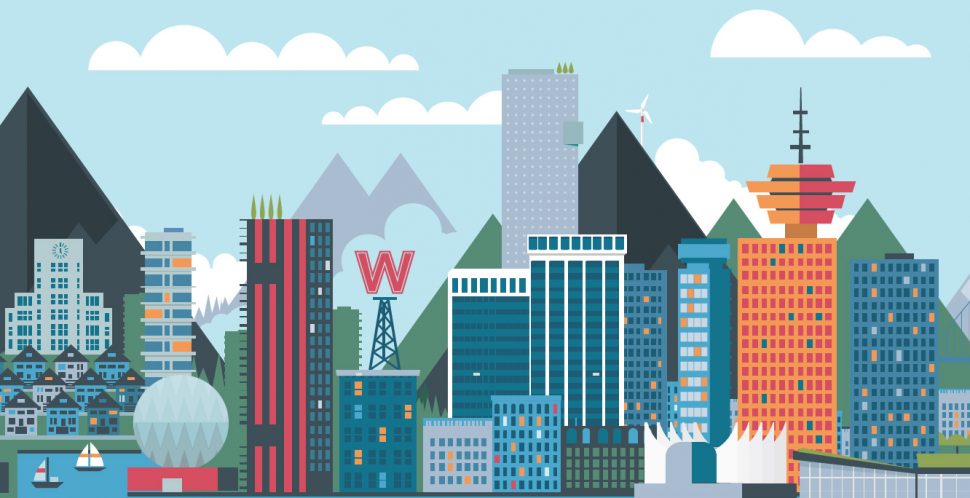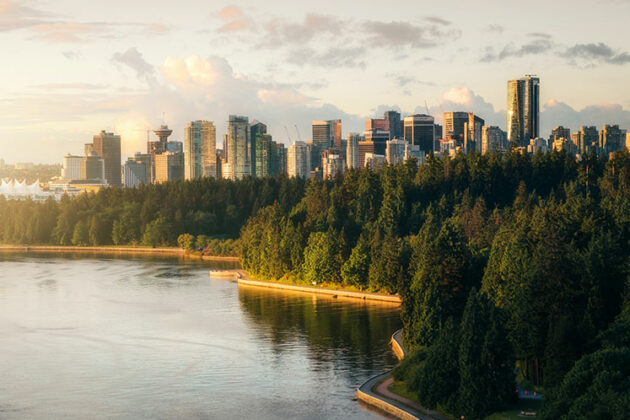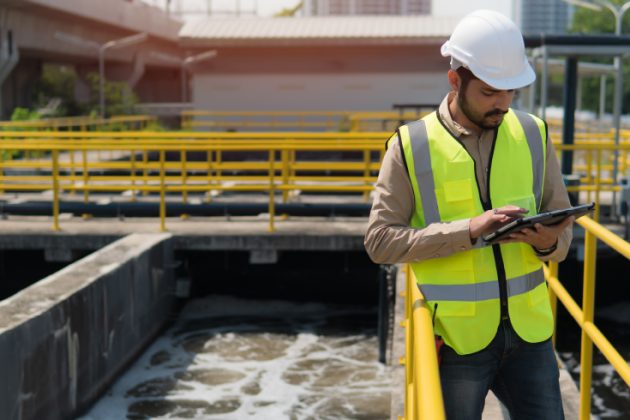2016 will be the year that EU Member States and cities – along with the rest of the world – start delivering on COP21’s climate action agreements. With goals to reduce greenhouse gas emissions worldwide, EU cities pondering how to meaningfully contribute to global sustainability goals without sacrificing economic growth need to look no further than Canada’s stunning west coast, green economy powerhouse – Vancouver. As the city’s economic development agency, the Vancouver Economic Commission’s (VEC) measureable and proactive approach is keeping the City’s economy diversified, ever more sustainable and growing steadily.
European cities – at all stages of planning and implementing their green economies – can learn from Vancouver’s experience by:
1. Thinking Big.
Resolutions or not, the most important step to reaching a green economy is to set meaningful – and ambitious – goals to realise a green future without sacrificing economic health.
Vancouver has consistently been rated one of the top most livable cities, with abundant natural advantages. Vancouverites have worked strenuously to maintain these advantages in creating a vibrant, sustainable and prosperous city, for living and doing business. In 2010, it enacted the Greenest City Action Plan, with the goal of making Vancouver the greenest city in the world by 2020. The plan was designed on the principle that making a city healthy will also make it wealthy.
Today, Vancouver is the first city in Canada, and the first major city in North America, to set the goal of being 100 percent renewable by 2050 (or sooner). In addition to preserving the city’s natural beauty, there is a tremendous economic opportunity in this goal: green jobs increased 19% in Vancouver between 2010 and 2014 – and the city is working towards doubling that number, and the number of companies that are actively engaged in greening their operations, by 2020.
2. Track and measure for maximum impact.
Since 2010, Vancouver, through the VEC, has been the only city in the world to consistently measure its green economy and track it over time. As a result, Vancouver’s green economic policies speak for themselves: the green economy generated $1.9 billion in economic activity in 2014 alone, and employed one in twenty Vancouverites. The city has averaged 3% growth in gross domestic product over the past five years – a rate envious anywhere in the Western world – while it reduced greenhouse gas emissions by 7% over 2007 levels, waste by 18% over 2008 levels, water consumption by 16% over 2006 levels and met or beat the most stringent air-quality guidelines.
For years Vancouver’s cutting-edge approach to urban planning, called “Vancouverism”, has been duplicated in other parts of the world, from Dubai to Copenhagen. The VEC’s green economy measurements have also become a model for other global cities, while enabling us to proactively identify areas of further opportunity to green Vancouver businesses. This has been shown through such initiatives as our City-wide Business, Energy and Emissions Profile, which determines how much emissions come from each economic sector thereby identifying opportunities for stronger climate action and policies.
In the last few months, the VEC has shared its pioneering model for evaluating green policies and programs – which looks at their impact on business performance- at international forums like C40 Cities, Renewable Cities, and of course in Paris during COP 21. This is to encourage other cities to effectively engage their local business communities work towards climate goals, while showing measureable economic and business value.
3. Engage early and engage often with businesses large and small.
Ambitious climate goals require innovative approaches to green economic development, particularly in light industrial and manufacturing areas; collaboration can fuel real innovation. In Vancouver, we put this philosophy to the test through the development of a “green enterprise zone” in the False Creek Flats, an industrial core being transformed into the greenest place to work and do business in the world. During the process the VEC surveyed over 200 businesses; through this broad community-based engagement, we gained intimate knowledge of the area’s economy, learning that wholesale trade, manufacturing and waste management services account for most emissions, and strategically determined the most effective policies to address emissions, reduce waste and create jobs.
4. Make your city a living lab to showcase results.
Cities need to engage with businesses in a variety of ways, and the results of that engagement needs to be transparent. Showcasing our mutual learnings moves us forward on the unprecedented challenge of climate change. The VEC supports companies at all stages of growth, and our first-in-kind Green and Digital Demonstration Program engages local entrepreneurs and start-ups to test, improve and validate their technology on city owned assets, which then enables them to accelerate commercialization. We have completed our pilot for this programme, and are now developing a number of ways to share the results with the world.
Final Thoughts
We are eager to continue to share our city’s approach with other jurisdictions and the private sector. Measuring, tracking, and identifying opportunities to grow a green economy are critical steps if we are to collectively achieve ambitious outcomes. Cities are laboratories of leadership, uniquely positioned to experiment with bold ideas. Our learnings are critical in moving the green agenda forward. And 2016 will provide a unique opportunity to take a page from our book and take meaningful steps toward building a prosperous green economy.



